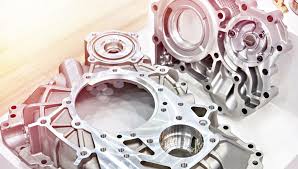Mobile:+86-311-808-126-83
Email:info@ydcastings.com
id fan impeller types
Understanding ID Fan Impeller Types A Comprehensive Overview
Industrial processes often rely on various types of fans to move air and gases efficiently. Among these, axial and centrifugal fans play vital roles, but when it comes to specifically designed applications, Induced Draft (ID) fans with varied impeller types come into play. This article will delve into the types of impellers used in ID fans, their features, advantages, and applications.
The Role of ID Fans
Induced Draft fans are essential in many industrial settings, particularly in power plants and manufacturing facilities. Their primary function is to remove flue gases from the combustion process and maintain optimal airflow in the furnace or boiler. The performance of an ID fan significantly depends on the design of its impeller.
Types of Impellers
1. Centrifugal Impellers Centrifugal impellers are among the most common types used in ID fans. These impellers operate on the principle of centrifugal force, where the air is drawn into the fan through an inlet and is expelled at a right angle to the incoming flow. They are characterized by their robust design and ability to handle high-pressure applications. Within this category, there are variations, including - Forward Curved Impellers These are designed with blades that curve in the direction of rotation. They provide high airflow at lower pressures, making them suitable for applications requiring large air volumes with moderate resistance. - Backward Curved Impellers Featuring blades that curve against the direction of rotation, these impellers are known for their ability to handle high pressures and are typically more efficient than forward-curved designs. They are ideal for applications demanding efficient operation at varying conditions.
id fan impeller types

2. Vane Axial Impellers Vane axial impellers are another common design used in ID fans. These impellers use angled blades to draw air parallel to the axis of rotation, creating a high volume flow with relatively low pressure. They are particularly effective in large-scale applications where massive airflow is needed, such as cooling towers or HVAC systems.
3. Mixed Flow Impellers Mixed flow impellers combine features of both centrifugal and axial designs. They generate both axial and radial flow components, making them versatile and efficient for a range of applications. Mixed-flow fans can effectively maintain airflow against moderate pressure loads and are often used in industrial ventilation systems.
Choosing the Right Impeller Type
Selecting the appropriate impeller type for an ID fan is crucial for ensuring optimal performance. Factors to consider include the required airflow rate, pressure, efficiency, and specific application demands. For example, a facility with high particulate emissions may benefit more from a backward-curved impeller, which can manage the resistance while maintaining efficiency.
Conclusion
ID fans are integral components across various industries, and the choice of impeller type significantly affects performance and energy efficiency. By understanding the different types of impellers—centrifugal, vane axial, and mixed flow—operators can make informed decisions to optimize their systems. A well-chosen impeller not only enhances the overall reliability of industrial processes but also contributes to energy savings and reduced operational costs, leading to a more sustainable and efficient industrial environment.
-
Why Should You Invest in Superior Pump Castings for Your Equipment?NewsJun.09,2025
-
Unlock Performance Potential with Stainless Impellers and Aluminum End CapsNewsJun.09,2025
-
Revolutionize Your Machinery with Superior Cast Iron and Aluminum ComponentsNewsJun.09,2025
-
Revolutionize Fluid Dynamics with Premium Pump ComponentsNewsJun.09,2025
-
Optimizing Industrial Systems with Essential Valve ComponentsNewsJun.09,2025
-
Elevate Grid Efficiency with High-Precision Power CastingsNewsJun.09,2025











